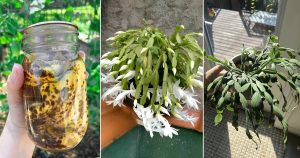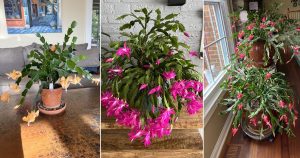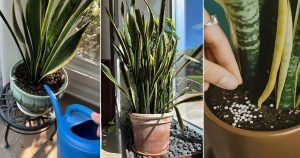Only had plants bloom with bright light? Here is a list of succulents that can surprisingly bloom in shade, too.
The million-dollar question every succulent lover asks at least once is—can succulents bloom in shade? While most thrive on sunlight, a few special ones can surprise you with flowers even in low light. Let’s meet them!
Succulents That Can Bloom in Shade
Tip: While these succulents can bloom in shade, remember that “shade” doesn’t mean complete darkness. They still need filtered or indirect light to stay healthy and flower.
1. Fairy Crassula
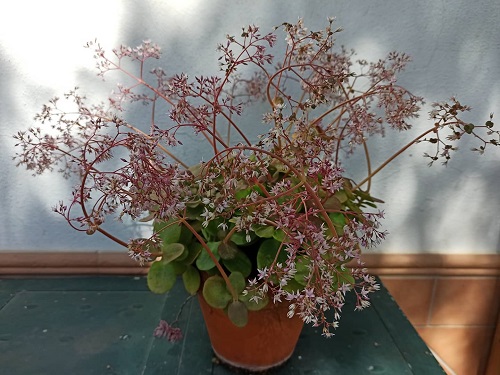
Botanical Name: Crassula multicava
This ground-cover beauty thrives in shady spots and puts out dainty, star-shaped pinkish-white flowers in winter. By spring, you’ll see airy clusters of blooms on slender stems—unless frost beats you to it.
It actually dislikes strong sun and can burn easily. All it needs is dappled shade, frost protection, and moderate watering.
It’s a fast spreader, so give it some room if you don’t want it to overcrowd nearby plants.
2. Wax Plant

Botanical Name: Hoya carnosa
One of the more laid-back plants native to East Asia and Australia, this climbing succulent is popular for its clusters of waxy flowers. Though the wax plant can thrive either in full sun or in filtered light, you’ll have no trouble getting it to produce its waxy, fragrant flowers even in dappled sunlight or bright shade.
For better flowering, keep it slightly root-bound, cut back watering in winter, and avoid moving it once buds appear.
Fun fact: Each bloom cluster can last for weeks, and the flowers even drip sweet nectar—so don’t be surprised if you notice ants visiting!
3. Devil’s Backbone
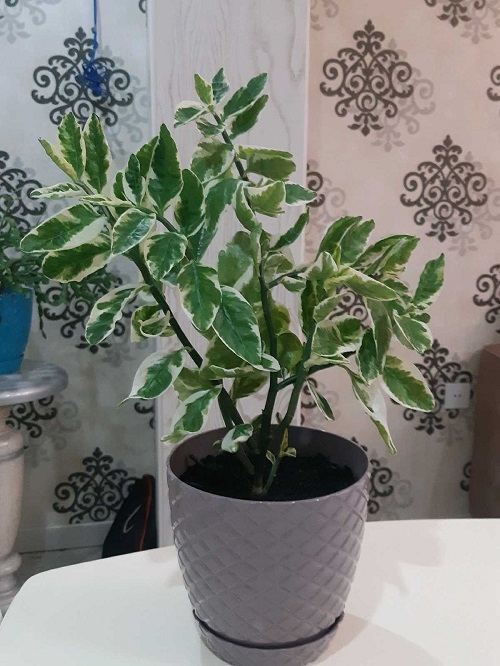
Botanical Name: Euphorbia tithymaloides
The strange name of this succulent may sound a bit weird and scary, but don’t let it fool you at all. This succulent is actually a delight to grow, thanks to its alternating leaves and colorful bracts. Most importantly, though, its ideal condition is a location with bright, indirect sunlight; it can definitely thrive in shady areas as well.
Coming to blooms, you will find the plant producing adorable small reddish flowers in shade, or if possible, bright shade. To increase the chances of blooming, provide consistent warmth and minimal watering.
Caution: Like most Euphorbias, its milky sap is toxic—always wear gloves when handling.
4. Easter Cactus
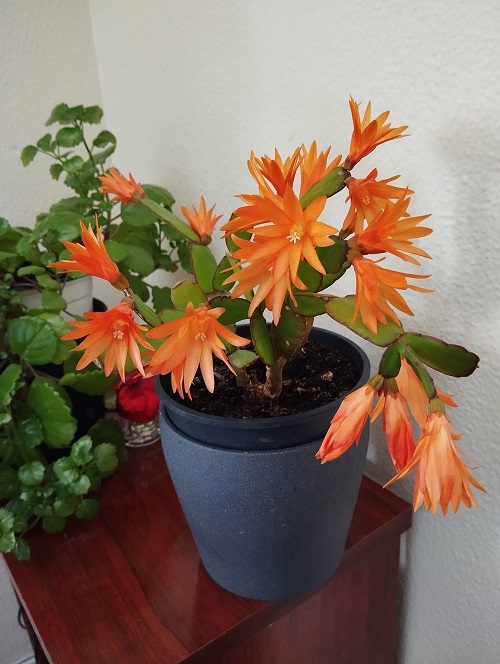
Botanical Name: Rhipsalidopsis gaertneri
Unlike its Christmas cousin, Easter cactus has smooth, rounded leaf edges. It shows off star-shaped blooms in red, pink, or lavender that open in the day and close at night.
It sets buds in late spring when nights are cooler and days are shorter. To bloom, it prefers being root-bound with a bit more humidity.
Tip: Don’t shuffle it around when budding—it may drop buds before they open.
5. Christmas Cactus
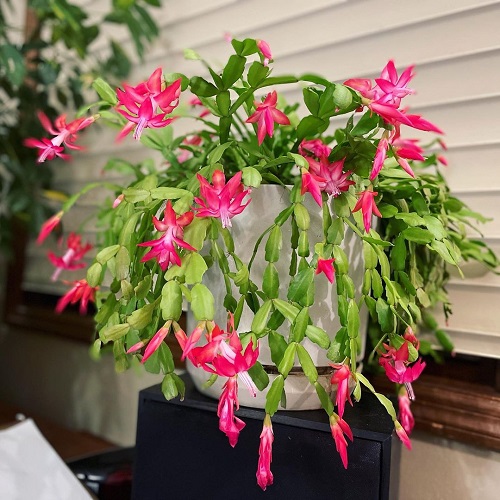
Botanical Name: Schlumbergera x buckleyi
Now the one that you had been waiting for— the Christmas Cactus blooms later than its Thanksgiving counterpart, but earlier than the Easter cactus. Its gracefully drooping, rounded-edged segments look gorgeous filled with typically pink blooms, from mid-December through January.
Besides the ease of care and striking blooms, which make them a holiday decor favorite, these too need slightly colder temperatures during longer nights. You won’t get buds at all if you put this plant in a bright spot for even a minute during the photoperiod.
If cared for properly, these plants can live and bloom for decades—often passed down as heirlooms.
6. Zebra Plant
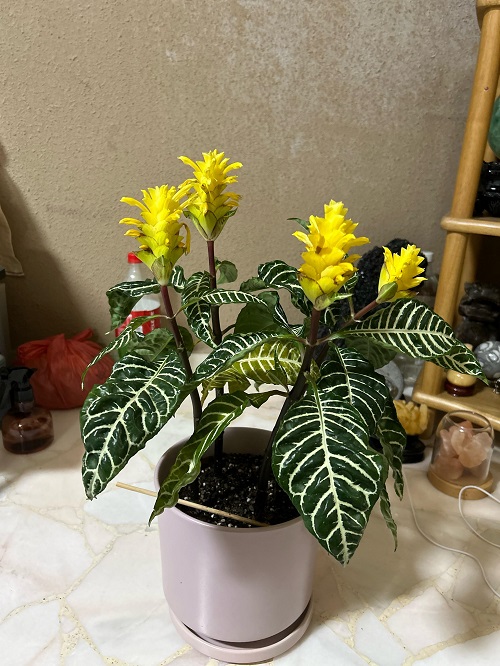
Botanical Name: Aphelandra squarrosa
Now, this plant might be slightly tricky to get to bloom, but it is definitely not impossible. First up, the plant itself is quite striking with its zebra-like patterns, which make it stand out even in dark spots. It definitely handles the shade well and even locations that receive alternating sun and shade.
Unless the conditions are absolutely perfect, this succulent will rarely bloom in the shade. But you can boost your chances to get the bright yellow bracts with flowers by giving it at least a few hours of bright, indirect light and high humidity.
7. Flaming Katy

Botanical Name: Kalanchoe blossfeldiana
Looking for a succulent with some bushy foliage that also blooms in shade with a bit of coaxing? Check out the Flaming katy. Since it needs warm temperatures, you should typically be growing it indoors. Even if the indoors is not the brightest, this succulent would not mind.
However, this can lessen the chances of blooms. Though it won’t need 6 to 8 hours of sunlight, it does need at least 4, without which you won’t see blooms. And even if you do see flowers, they may fade without brightness.
Deadhead spent flowers regularly, and you’ll encourage it to bloom again.
8. Woodland Stonecrop
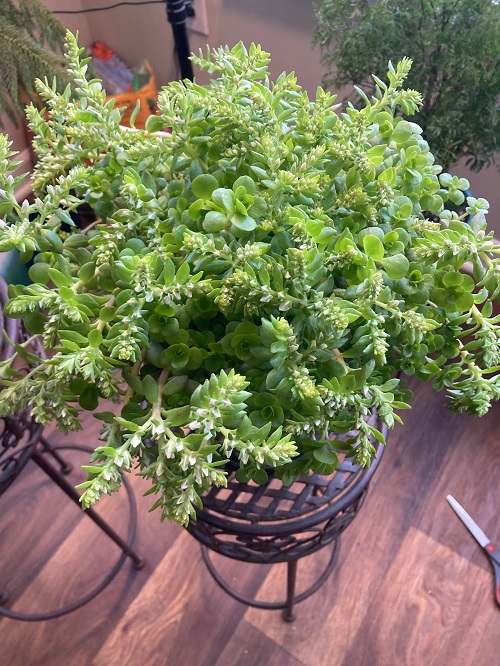
Botanical Name: Sedum ternatum
Are you just a beginner in the succulent world? Then growing and getting this sedum to bloom will be a great project for you. Though they usually prefer sunny outdoor locations, you can easily grow them in partial or full shade too. And no need to worry about flowers either!
This shade-adapted succulent blooms with starry white flowers in spring, provided you keep the soil slightly moist and do not plunge the plant into complete darkness!
9. Night-Blooming Cereus

Botanical Name: Selenicereus grandiflorus
This tall, ribbed cactus is famous for its massive night-blooming flowers with a sweet, intoxicating fragrance. They open at dusk and wilt with sunrise—blink, and you’ll miss them.
It blooms only when mature (4–5 years old). To encourage flowers from July to October, give it complete darkness from dusk to dawn.
Because blooms last one night, plant lovers often host “Cactus Bloom Parties” to watch the show together.
So these are the succulents that can bloom well in shade. Surprised by any? Let us know which ones in the comments below!


